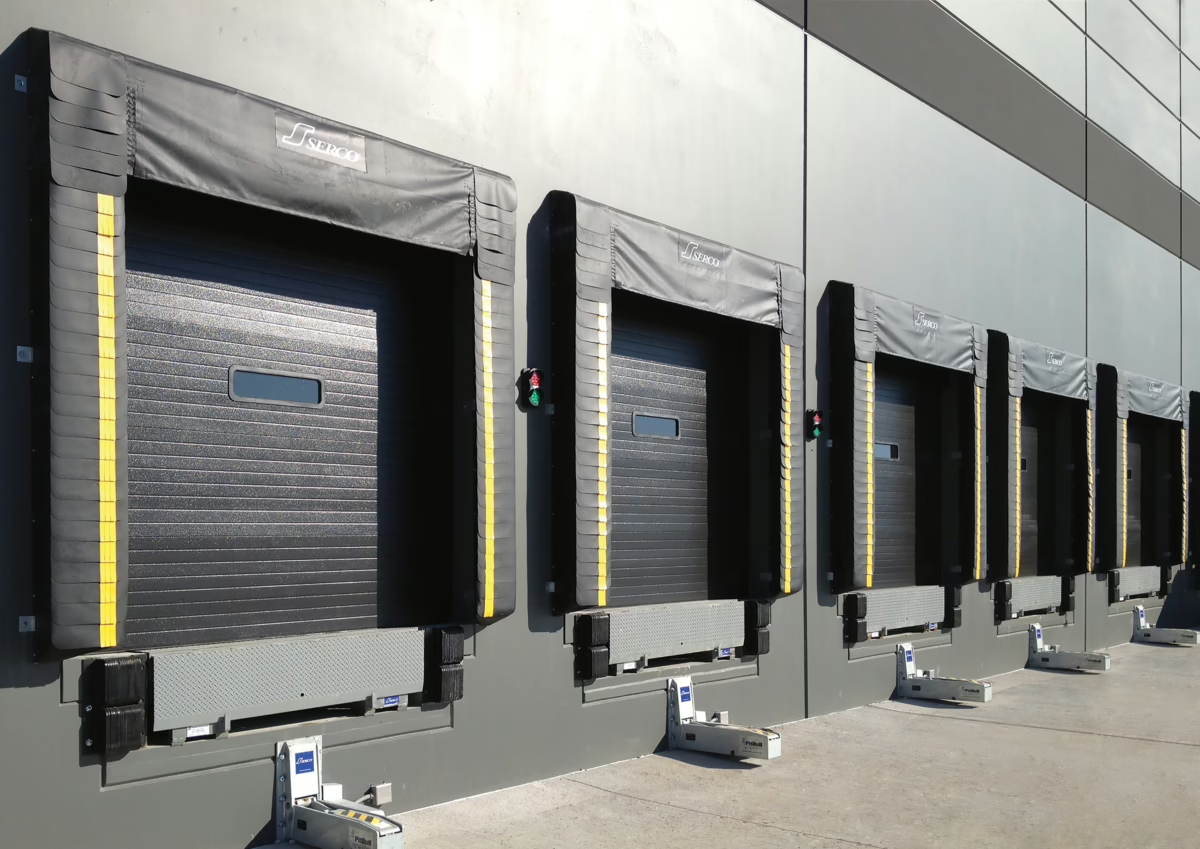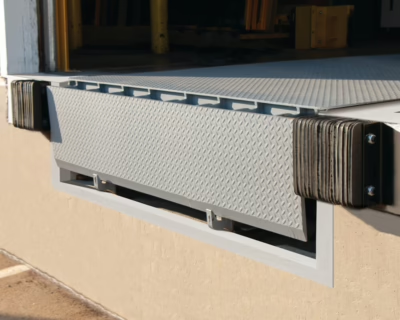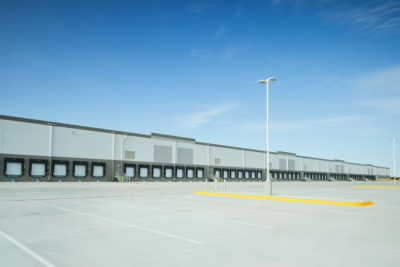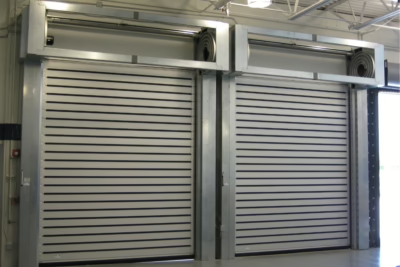When it comes to optimizing your loading dock for safety, efficiency, and environmental control, choosing the right type of dock enclosure is critical. Dock seals and dock shelters both serve the same purpose — to form a protective barrier between a building and a trailer during loading and unloading — but they function in distinct ways and are best suited for different applications.
This guide breaks down the differences between dock seals and dock shelters, including their construction, performance, maintenance, and cost considerations. Whether you’re outfitting a new facility or upgrading your current dock equipment, understanding these options will help you make an informed choice that supports your operational goals.
Why Dock Enclosures Matter
Without a proper dock seal or shelter, your facility is vulnerable to outside elements, pests, energy loss, and safety risks. Enclosures provide a tight seal between the trailer and the building to help:
- Maintain interior climate control
- Prevent water, dust, and debris infiltration
- Improve energy efficiency
- Protect goods and personnel from exposure
The right solution can reduce operational costs, minimize product damage, and improve employee working conditions — especially in temperature-controlled or food-grade environments.
What Is a Dock Seal?
Dock seals are foam-filled pads that compress when a trailer backs into the dock, creating a tight seal around the top and sides of the trailer. They are most effective when used with trailers of consistent size and height.
Key features:
- Constructed with high-density foam and abrasion-resistant fabric
- Compress against the trailer to form a snug, airtight seal
- Installed directly around the dock door frame
Ideal for:
- Warehouses with uniform trailer fleets
- Cold storage or climate-sensitive facilities
- Applications where energy loss must be minimized
Because dock seals form a tighter seal, they’re especially useful for facilities where temperature control and energy conservation are top priorities. However, repeated contact can cause compression wear over time.
What Is a Dock Shelter?
Dock shelters use a fabric curtain and side-frame structure to form a flexible enclosure around the trailer. Unlike seals, they do not rely on foam compression — instead, they provide a protected entry point that allows for greater trailer size variability.
Key features:
- Use curtain-style side and head panels
- Accommodate various trailer heights and widths
- Create a weather-resistant, but not airtight, seal
Ideal for:
- Facilities with a wide range of trailer sizes
- High-traffic distribution centers
- Environments where durability is more critical than full insulation
Dock shelters offer a longer service life than seals due to reduced compression stress, making them well-suited for operations with heavy dock cycles.
Pros and Cons at a Glance
Feature
Seal Tightness
Dock Seals
Excellent (airtight)
Dock Shelters
Good (weather-resistant)
Trailer Compatibility
Limited (uniform sizes)
Broad (varied sizes)
Durability
Moderate (compresses over time)
High (less wear and tear)
Maintenance Needs
Higher (requires inspection)
Lower (less friction)
Energy Efficiency
High
Moderate
Cost
Lower upfront
Higher upfront
Cost Comparison: Seals vs. Shelters Over Time
Initial Investment:
- Dock seals are typically less expensive to purchase and install.
- Dock shelters have higher upfront costs due to their larger, more complex structure.
Operating Costs:
- Seals may require more frequent replacement in high-traffic environments, especially if misaligned trailers compress them unevenly.
- Shelters tend to have longer lifespans and lower maintenance frequency, reducing long-term costs.
Total Cost of Ownership:
If your facility uses a consistent fleet of trucks and places a premium on energy savings (e.g., cold storage), dock seals may offer better ROI. However, if you deal with high traffic, variable vehicles, or harsh environments, shelters may prove more economical in the long run due to reduced downtime and longer usable life.
Maintenance Tips for Dock Seals and Shelters
Both seals and shelters benefit from regular inspection and upkeep to ensure performance and longevity.
For Dock Seals:
- Inspect foam compression for signs of permanent deformation
- Check fabric covers for tears or abrasions
- Ensure mounting hardware is tight and frames are square
- Clean seals regularly to remove dirt and moisture that can cause mildew
For Dock Shelters:
- Examine fabric panels for fraying or sagging
- Look for wear around edges where curtains contact trailers
- Confirm that the shelter frame remains properly aligned
- Replace worn Velcro or gaskets to maintain weather protection
A preventive maintenance plan, such as those offered by DuraServ, can help extend the lifespan of your dock enclosures and minimize unexpected failures.
Real-World Example: Cold Storage vs. Distribution Center
A refrigerated food storage facility in Minnesota used standard dock shelters for years but faced issues with heat loss and condensation near the dock doors. After an audit, they switched to high-performance dock seals with thermal foam and wear-resistant covers.
The result?
- 30% reduction in HVAC energy usage
- Improved loading dock air quality
- Extended product shelf life
In contrast, a distribution center in Dallas that receives everything from dry vans to pup trailers found dock seals too limiting. They upgraded to adjustable dock shelters that could accommodate a range of trailer heights and widths without the risk of damage from misalignment.
The impact?
- Reduced repair costs from dock seal wear
- Faster loading times due to easier alignment
- Increased satisfaction from third-party carriers
Additional Considerations
When choosing between seals and shelters, also factor in:
- Door height and width — Oversized docks may require custom solutions
- Dock height — Influences the angle and sealability of trailers
- Weather exposure — Wind, snow, and rain may demand higher-grade enclosures
- Traffic volume — High-frequency use favors the durability of shelters
- Integration with other equipment — Ensure compatibility with levelers, restraints, and bumpers
For some facilities, a hybrid solution — such as a shelter with foam side pads — provides the best of both worlds.
Final Thoughts
Dock seals and dock shelters are essential components of a well-functioning loading dock, but they serve different purposes. For example, Dock seals offer a tight, energy-efficient fit ideal for climate-controlled operations with uniform fleets. Dock shelters provide broader trailer compatibility and durability in high-traffic, mixed-use environments.
Choosing the right solution comes down to understanding your facility’s priorities — whether it’s thermal performance, equipment longevity, or flexibility. At DuraServ, we help businesses across North America select, install, and maintain the right dock enclosures for their operational needs.Not sure whether your facility needs a dock seal or a dock shelter? Learn the key differences, pros and cons, and which is right for your operation.



